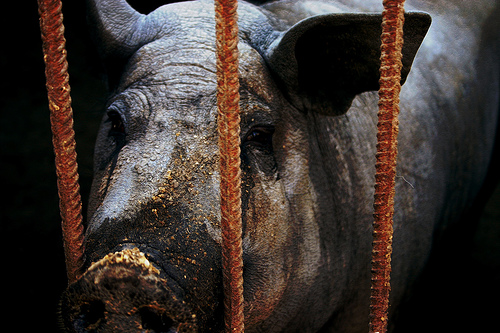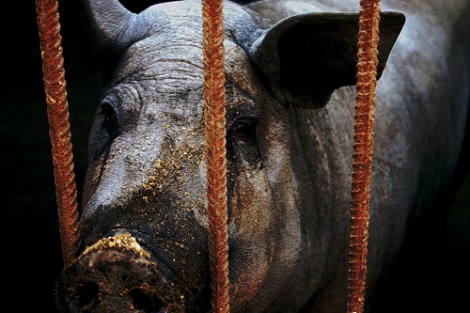From the medieval period all the way through the 18th century, when a domesticated animal like a pig or a donkey committed a crime, the society in which they lived put them on trial. It was sort of a cross between Dr. Doolittle and Judge Judy. Judge Joolittle? No.
What crimes can an animal commit, you ask? Well, apparently pigs are cold-blooded murderers. And at least one donkey was put on trial for “bestiality” with a human, which seems really unfair. (She was exonerated.)
According to Slate, those trials took into account the moral character of the accused, just as they might for a human:
Only domesticated animals were subject to such character examinations — the expectation being that, living among humans, they better understood the difference between right and wrong. When pigs behaved badly in the courtroom — such as by grunting loudly in the prisoner’s box — this lack of composure could count against them during sentencing.
These trials took into account the animals’ cruelty or their reputation for honesty. Young, immature animals were judged less harshly — like juvenile offenders today, they were considered too young to understand the full import of what they’d done.
In the Slate article, James McWilliams argues that this approach to animal justice probably had something to do with the intimate relationships humans had with animals.
Seventeenth-century farming account books suggest that farmers of that era spent up to 16 hours a day observing and caring for domesticated beasts. They watched these animals make choices, respond to human directives, engage in social relationships, and distinguish themselves as individuals with unique personalities.
What changed? Factory farming was introduced:
This observational intimacy lasted well into the 19th century, until feedlots and packing plants consolidated the business of animal agriculture, eventually superseding the practices that kept animals and farmers in close and relatively long-term proximity. A change in mentality followed this consolidation. Humans began to think and talk about animals as objects. “The pig,” explained one agricultural manual from the 1880s, “is the most valuable machine on the farm.” Today, with nearly 99 percent of animal products deriving from these “factory farms,” this view of animals-as-objects persists as the dominant perspective.
And machines can’t be judged on their honesty or cruelty. They’re just there to produce. At least, until the day that they figure out how to put us on trial. We’re not looking forward to hearing what they think of our innate propensity for cruelty.




